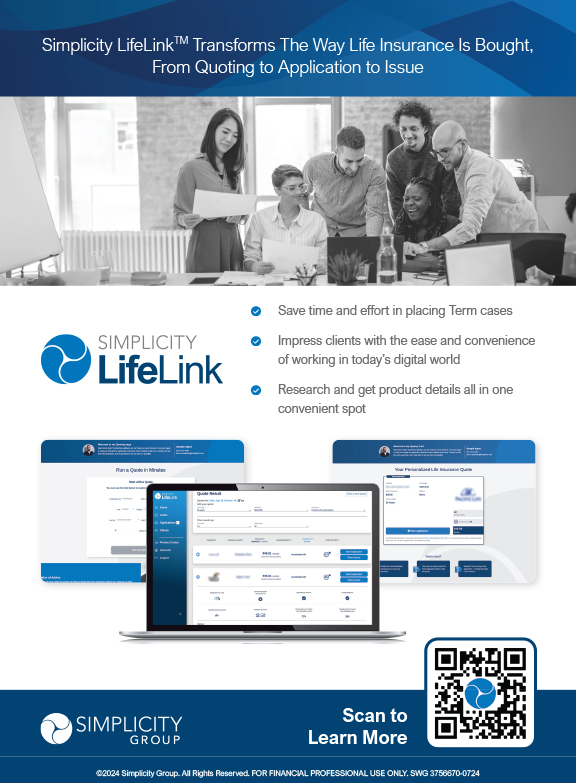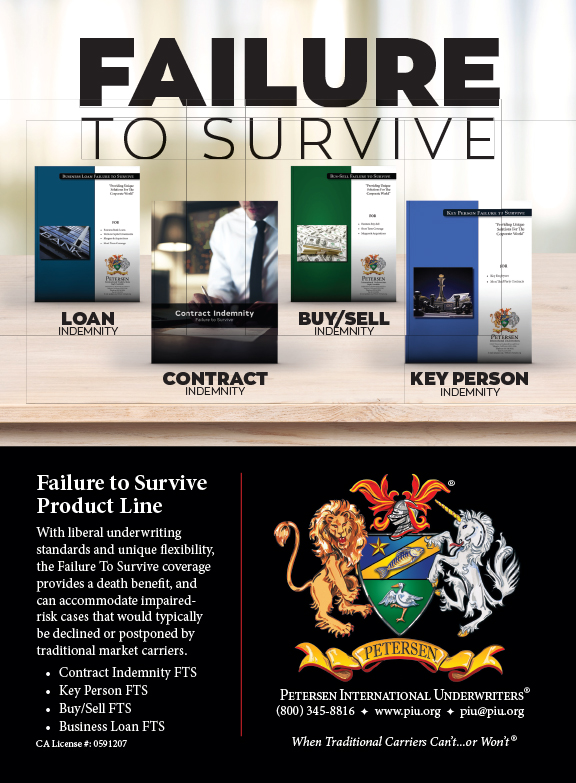Both of my kids play basketball at least 300 days a year. If it’s not the time of year for school basketball, then they are participating in AAU clubs. If they are not doing AAU or school ball, they are in the gym by themselves. For those of you that have (or had) young athletes, you know the amount of transporting kids, coordinating tournament schedules, etc., that happens. And everything is always evolving: What shirts they should wear at a certain tournament, who is bringing snacks, who is sponsoring what event, etc. With that, sometimes it’s so overwhelming that I just declare mental bankruptcy. That is, I erase all the minutia from my mind and tell my wife, “I will just go where you tell me to go.”
That is analogous to what has happened with many agents over the last five years or so when it comes to inherited IRAs, as well as inherited non-qualified annuities that have deferred gain. We had The Secure Act of 2019 that squashed the “Stretch IRA” in many situations, then we had the uncertainty around RMDs and the 10-year rule that the IRS keeps going back-and-forth on, now you have secure 2.0, and the list goes on. I have found that many financial professionals that work with annuities have just declared mental bankruptcy and figure they would navigate this bridge once they approach it and once the dust settles. Needless to say, that may not be a great strategy. So, I will briefly simplify the options below.
What is a Stretch?
I will oversimplify what a stretch IRA is first. Quite simply if one has $1 million in IRA money and passes away, for the beneficiary to cash out that entire $1 million in the first year, it’s not inconceivable to lose $400,000 right off the top. Hence, the inherited $1 million immediately goes to $600,000. Conversely, with a Stretch IRA option that existed prior to 2020, you can stretch that tax liability out over the beneficiary’s lifetime by just taking annual required distributions (based on a table). If you think of the way that compounding works, if the beneficiary’s required distributions in the early years are only three or four percent (based off the table) of the total value but yet the annuity is growing at five, six or seven percent, the beneficiary’s $1 million is not being reduced, it is getting larger and larger up to a point. So, over a 30-, 40-, or 50-year lifetime, that $1 million could very easily generate $2 million to $5 million in additional wealth to that beneficiary by “stretching” the tax liability. In 2019 Congress decided this option would no longer be available for many beneficiaries of IRAs when death happened in 2020 or later. So, let’s explain what the options are today.
Non-Qualified Stretch: What Changed?
Let’s forget IRA money for a second. If one passes away with a non-qualified annuity that has a significant amount of accumulated interest in it, what is taxable to the beneficiary? Well, if the beneficiary just cashed it out, the entire gain would be taxable in that year. However, congress has allowed for the gain to be “stretched” by utilizing the same life expectancy table as the Stretch IRA. What happened to this option with the recent legislation? Nothing. This still exists for most beneficiaries of that annuity today!
Many agents come to me as they are working with the beneficiary of a non-qualified annuity where the original owner just died. They often ask if they can move the inherited non-qualified money to another carrier. The answer is yes. Just note that as far as doing a 1035 of a non-qualified stretch IRA–after death has happened–not all companies accept it. Ask your IMO who does and who does not.
Stretch IRAs with Death Before January 1,2020: What Changed?
For “Decedent IRAs” where death happened prior to January 1, 2020, and the beneficiaries are currently “stretching” the IRA, nothing has changed. Basically, this money is “grandfathered in” and can continue to be stretched. However, again, not all companies accept Stretch IRAs to be transferred into them, regardless of when death happened. Some do, however.
Decedent IRAs with Death on or After January 1, 2020: What Changed?
This is where the changes happened. The Secure Act introduced us to two classes of beneficiaries: Eligible Designated Beneficiaries and Non-Eligible Designated Beneficiaries.
Class 1: Eligible Designated Beneficiaries which are designated beneficiaries of the IRA that are also:
- A spouse, or,
- A disabled beneficiary, or,
- A child who has not yet reached age 21, or,
- A chronically ill beneficiary, or,
- A beneficiary who is not more than 10 years younger than the owner.
For this group, the Stretch IRA option still exists. However, for the spouse, he/she will usually leverage the additional option that the spouse has always had, to take it over as her/his own IRA (Spousal Continuance). So, for the spouse, the Stretch IRA is rarely used.
There is also an exception for the minor child who hasn’t reached age 21 yet. This exception says that once he/she hits age 21 then he/she must continue those RMDs, with a catch! He/she must completely empty the IRA by December 31 of the 10th year after he/she turns age 21. In other words, once he/she hits age 21, they are subject to “The 10-Year Rule.”
(Note: Money passing on to siblings often can be “stretched.” That is because oftentimes the sibling is not more than 10 years younger than the deceased.)
Class 2: Non-Eligible Beneficiaries which are designated beneficiaries of the IRA that are basically everybody else not on the previous list. For example, a 50-year-old son or daughter that has been named as a beneficiary.
For these folks, if the original owner died on or after January 1, 2020, then they are subject to the “10-Year Rule.” Again, if the original owner died prior to January 1, 2020, then they could have chosen the stretch. The 10-year rule says that they must cash out the entire balance of the IRA by December 31 of the 10th year after death. No more stretching over life.
Here is a question and a source of confusion that the IRS has gone back and forth on: For our Non-Eligible Designated Beneficiary, do they have to take Required Minimum Distributions in years 1 through 9? It depends. It depends on if the original owner was taking their required minimum distributions. If the answer is yes, then the answer is “yes, you have to take RMDs in years one through nine.” The RMD for the original owner must be satisfied in the year of death. But, thereafter, the RMDs are based on the beneficiary’s life expectancy reduced by one for each year that goes by. In short, if the owner was required to take RMDs, then the beneficiary will be required to as well, until they fully liquidate the account by the end of year 10. As Ed Slott says, “If the original owner had to turn on the RMD spigot, then that RMD spigot must continue, even after death.”
In the example, if the original owner had not yet been taking their RMDs, then no RMD is due from the beneficiary. However, of course the beneficiary would still need to liquidate the entire account by the end of the 10th year.
What about transferring the Decedent IRA that is subject to the 10-year rule to another annuity company? Can you do this? Yes you can but, as you might guess, some companies accept Decedent IRAs subject to the 10-year rule, and some don’t. For those that do accept it, they oftentimes will only allow it for certain products (with less than 10 surrender periods). Again, speak with your IMO.
What about Inherited Roth IRAs?
The 10-year rule applies. What does not apply is the RMDs between year one and nine for the beneficiary. This is because the original owner of the Roth IRA would never be subject to RMDs with a Roth.
This article is not all-encompassing as I did not get into recent RMD relief, estates as benes, the lump sum options, trusts as benes, etc. However, this should give you a fairly decent roadmap. If you would like a chart that lays this out “at a glance,” let me know.



























